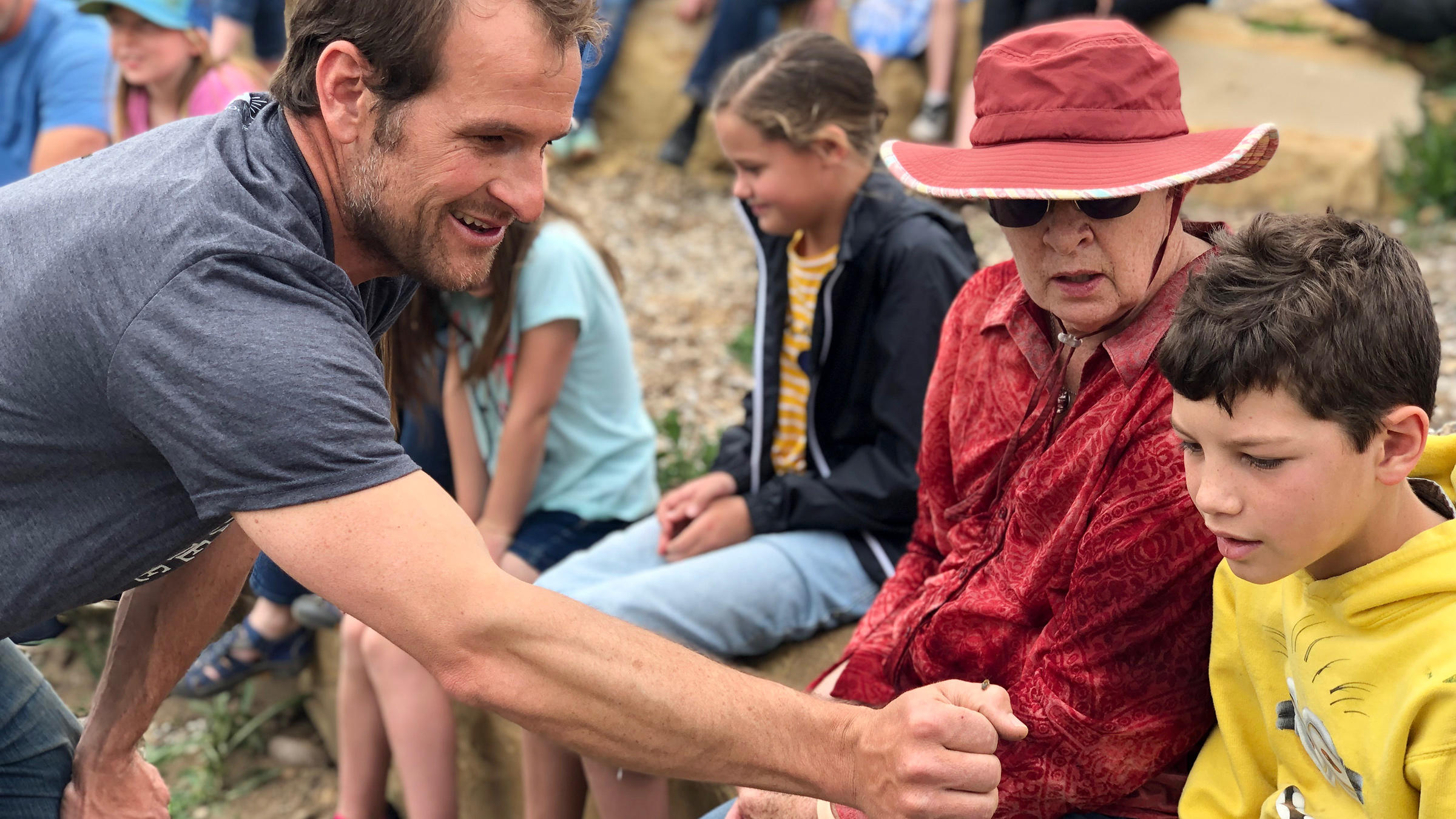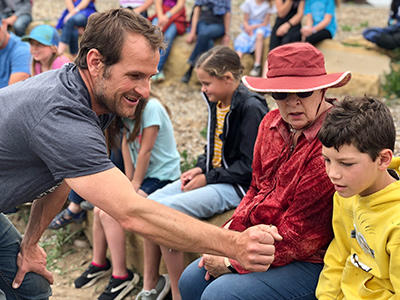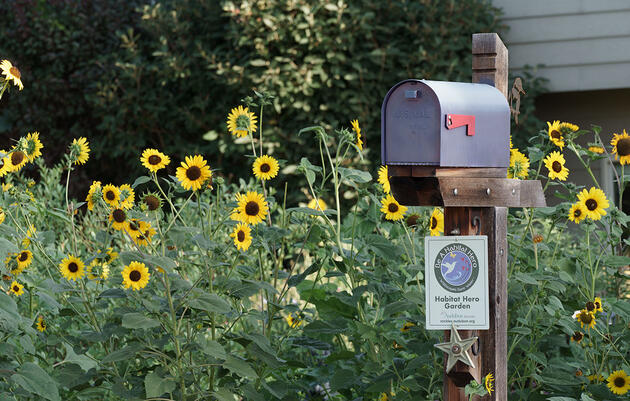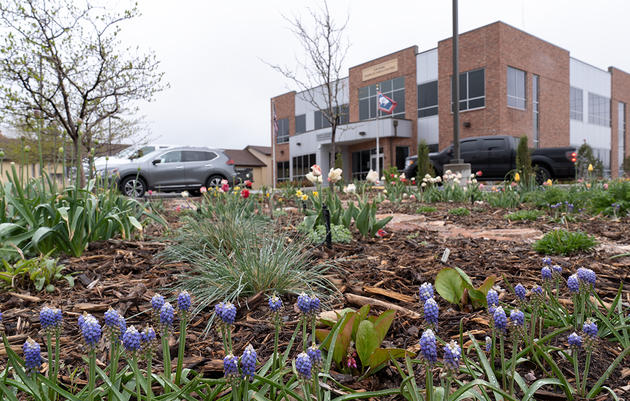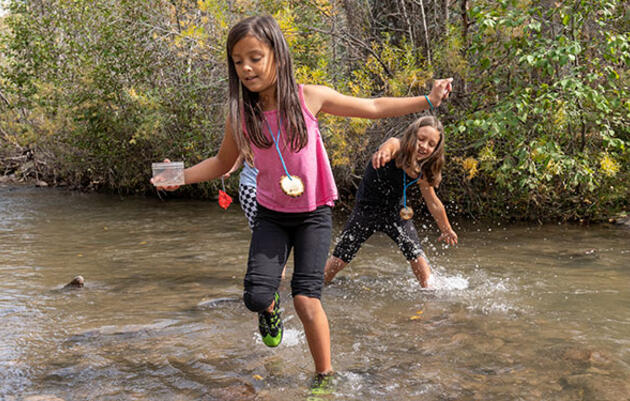In Pagosa Springs, Colorado, we recently installed several pollinator homes downtown at the Geothermal Greenhouse Partnership. Thanks to more than 100 K-8th students of Pagosa Family School and a high school environmental advocacy course called Youth Rise, we released more than 700 native bees to the Geothermal Greenhouse Partnership site. Students installed the cocoons for their adult emergence into these structures that they decorated and helped to build.
Some bees instantly went “to work," flying straight to blossoms and seeking out nesting reeds for laying eggs. Even better, we noticed wild bees already on the landscape taking up immediate residence in the nesting cavity of their choice before we could even release more bees to the site.
With these structures, one can detect mason bee activity by spotting reeds or drilled holes capped with dry mud. These reeds can hold several chambers of eggs and pollens provided for future mason generations. The bees are metallic blue and can oftentimes be seen carrying yellow pollen on their abdomens. Leafcutter bees, on the other hand, are a little smaller, black and yellow, and prefer to transport small bits of leaf from Rose and Pea family plants to cap their nesting holes.
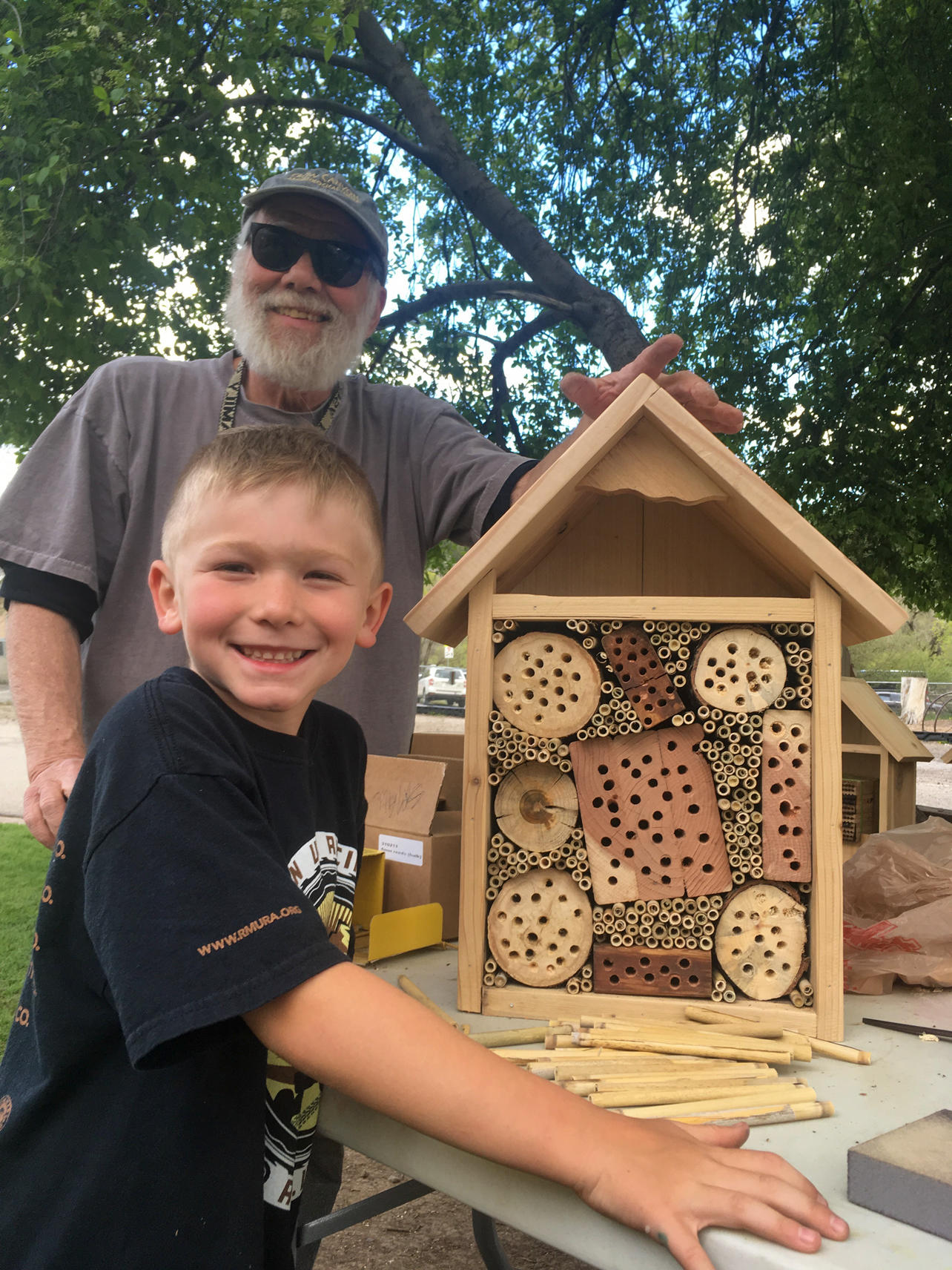
Our goal with the Pagosa Springs project was to benefit the plants and birds with a community service pollinator project in May 2019. These structures—packed with hollow reeds and drilled blocks of wood—are not only decorative, but more importantly offer nesting habitat to native, solitary bees. Specifically, these small-gauge holes encourage mason and leafcutter bees, indigenous to the region and known for their amazing ability to pollinate. It has been estimated that one mason bee can pollinate as efficiently as 100 honeybees!
Though honeybees are also important pollinators on the landscape, they did not originate here and thus are less efficient at pollinating both wild and landscaped plants. Honeybees are creatures of habit and will often repeatedly visit the same pollen sources. On the other hand, leafcutter and mason bees are much more erratic with which blossoms they visit and therefore effectively cross-pollinate plants more regularly.
At Audubon Rockies, we approach bird conservation in the same vein that John Muir indicated when he said, “When we try to pick out anything by itself, we find it hitched to everything else in the universe.” Thus, our Habitat Hero program was launched in December 2014. Through this effort, we work to encourage homeowners and communities to plant native plants and subsequently promote native insect populations and pollinator forage. Why? Because pollinators help create more plants, and more plants help create more insects, both of which are critical sources of bird food.
Something important to note is that mason and leafcutter bees are gentle and have no interest in stinging you. The males do not have stingers, and the females will only sting (lightly) if roughly handled, but this is rare. It is still wise to give them space and let them go about their business. After all, it’s to these bees that we should offer our gratitude for the food on our tables. One in every three bites of food comes from insect pollinators! Bees are critical to our food security and encouraging native bees is a great way to ensure that your fruit-bearing plants yield to their potential. In doing so, the biggest plus is that we support bird populations! Remember, please give them space and simply admire their hard work!
Check out our Habitat Hero program to learn how you can promote bird and pollinator health by planting native plants

